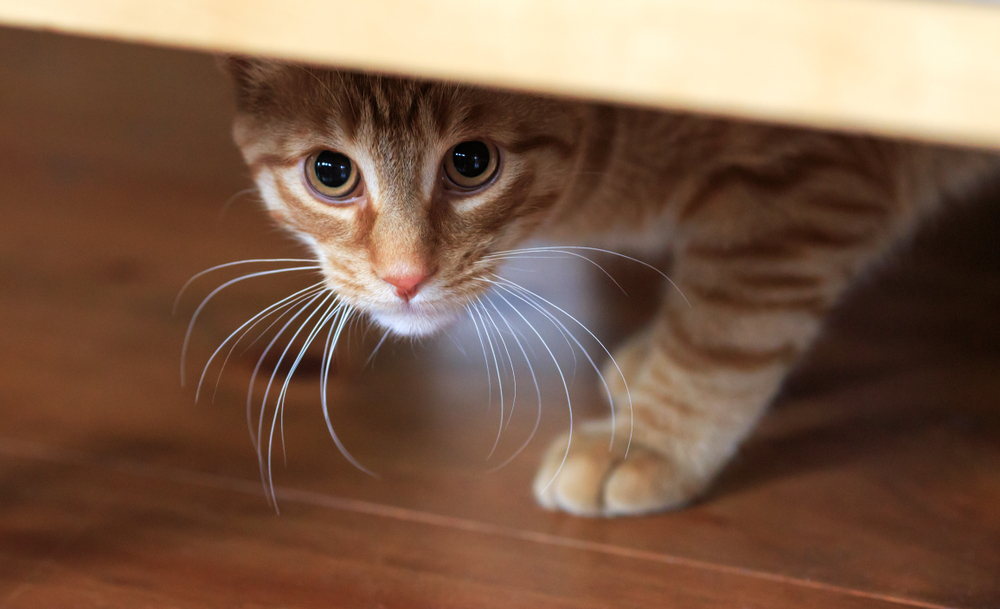Your Shy Pet Can Get Past Their Shyness
Does your dog run under the bed every time the doorbell rings? Does your cat hide in the closest when other people are in the home? If you have noticed that your pet is anxious, physically shaking, or avoiding other pets and people, you have a shy pet.
Bashful pets don’t need to suffer in the corner. We are here to give you information and suggestions on how to socialize your shy pet.
Why So Shy?
Many pets who are considered shy or anxious were not properly socialized. This could have been overlooked for a number of reasons (illness, injury, feral background, or adoption with unknown background). Your adopted pet may have had a bad experience in their early development with a person or other animal.
To help your shy dog or cat, the first order of business is to identify the triggers that cause them to feel shy. Is it all people? Men? Noise stimulus, such as a doorbell or alarm? Or, is your pet shy around other animals? Do you notice that your pet is shyer when out in the public or when a stranger comes to the home?
Making this list will not only help you minimize the causes of stress for your fur baby, but it will also give trainers and your veterinarian insight into how to best socialize them.
Managing Fear Response
A shy pet is often a fearful pet. Pets who have prolonged fear, anxiety, or phobia are at an increased risk of health and behavioral issues. Aggression, a higher likelihood of escape, and the long-term impact on health can become problems, if not now then down the road.
Have you noticed any signs of fear, such as…
- Cowering
- Trembling
- Urinating while in a submissive stance
- Growling
- Hiding
- Avoidance of gaze
In these situations, if you are not working to dispel the fear, it can turn into an accidental bite or escape. Here are a few things you can do to minimize a fear response and protect your pet and others.
- Avoid loud/crowded areas if you know that your pet is averse to strangers.
- When on a walk, ask that strangers avoid approaching or petting your dog and explain that they are fearful of new people. Create distance by walking across the street when you see approaching people.
- At home, make sure your pet has its own safe place when new people or pets come over.
- Baby gates and other barriers are great if your pet likes to see what is happening but still wants their own privacy.
- Give shy kitties plenty of spots to hide, such as in the closet or in their own cubby.
Tips for Training & Socializing a Shy Pet
If your pet hasn’t had professional, group-based reward training, we highly recommend it. Not only does this help them become more comfortable and confident in their skills but also in their ability to be in a strange, yet supervised and safe situation. Please contact our team for more information on upcoming classes.
To gradually socialize a shy pet:
- Start slow in a less crowded park, neighborhood, or patio, if your pet fears public spaces.
- Reward your pet with favorite treats.
- Try a buddy system by bringing along a friend’s socially comfortable pet.
- Slowly introduce new people or pets into the home, with intervals of stopping and allowing your pet to retreat to where they are comfortable.
- Offer group playdates at your house and use baby gates so your pet can approach and smell without being in the center of the activity.
- Always be mindful of how your pet responds and don’t push too much social time if they become agitated or fearful.
Ultimately, the key is patience, perseverance, and a slow pace to socialization. Oh, and plenty of rewards for great behavior! Union Lake Pet Services is always here for you and your shy pet, should you need additional support or have questions. Please phone us!

